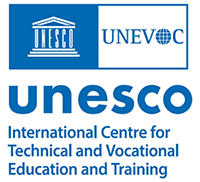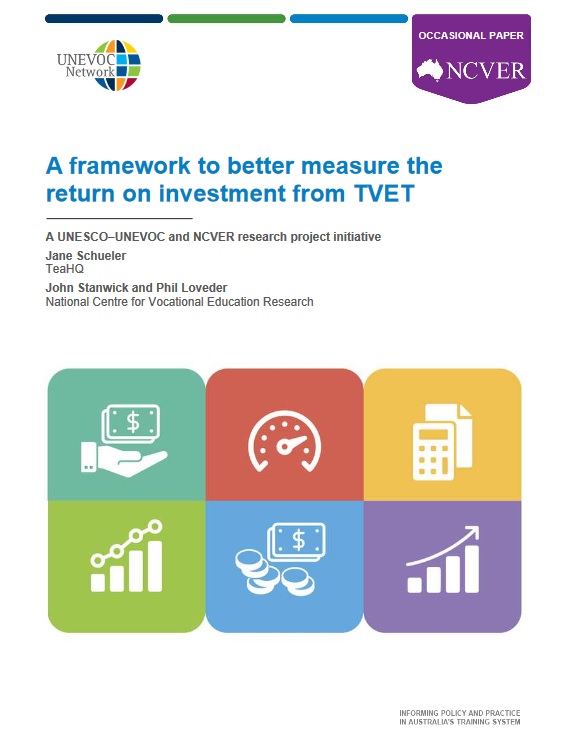
The UNESCO-UNEVOC International Centre: Who We Are | What We Do | Working With Us | Get in Touch
The UNEVOC Network: Learn About the Network | UNEVOC Network Directory
For Members: UNEVOC Centre Dashboard
Thematic Areas: Inclusion and Youth | Digital Transformation | Private Sector Engagement | SDGs and Greening TVET
Our Key Programmes & Projects: BILT: Bridging Innovation and Learning in TVET | Building TVET resilience | TVET Leadership Programme | WYSD: World Youth Skills Day
Past Activities: COVID-19 response | i-hubs project | TVET Global Forums | Virtual Conferences | YEM Knowledge Portal
Our Services & Resources: Publications | TVET Forum | TVET Country Profiles | TVETipedia Glossary | Innovative and Promising Practices | Toolkits for TVET Providers | Entrepreneurial Learning Guide
Events: Major TVET Events | UNEVOC Network News

| Author/s: | Jane Schueler, John Stanwick and Phil Loveder |
| Publisher/s: | NCVER |
| Published: | 2017 in Adelaide, Australia |
| Licence: | CC BY |
| ISBN: | 978-1-925173-88-8 |
Understanding the return on investment (ROI) in VET provides governments with information on the performance of the system and justification for public expenditure. It can help enterprises and individuals to measure productivity improvement in firms or to determine increases in the employability of individuals following training investment. However, the measurement of ROI is not straightforward. This report introduces a conceptual framework for defining what is involved in the ROI calculation and provides a guide to what type of information and data are required to calculate the returns to training for government, employers and individuals.
The framework developed as part of a collaborative research jointly implemented by UNESCO-UNEVOC and NCVER as one of the UNEVOC Centres.